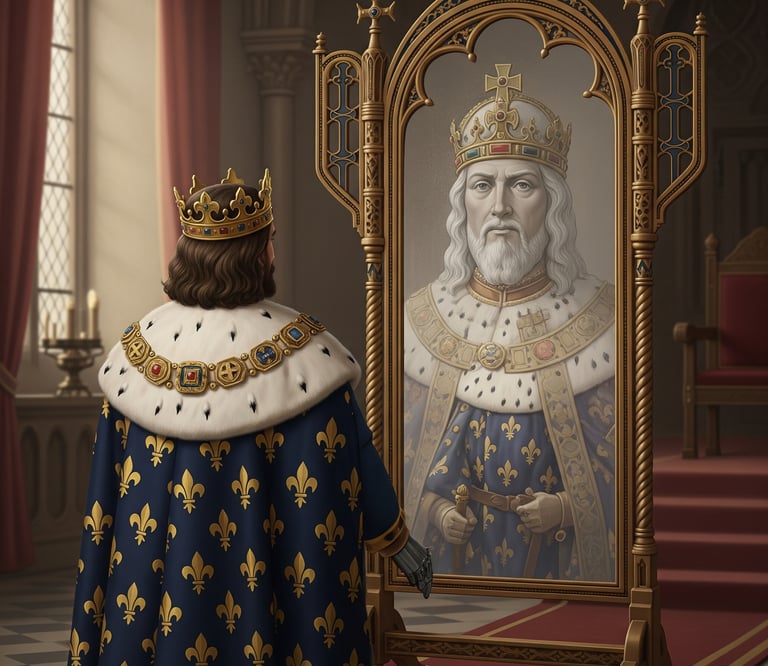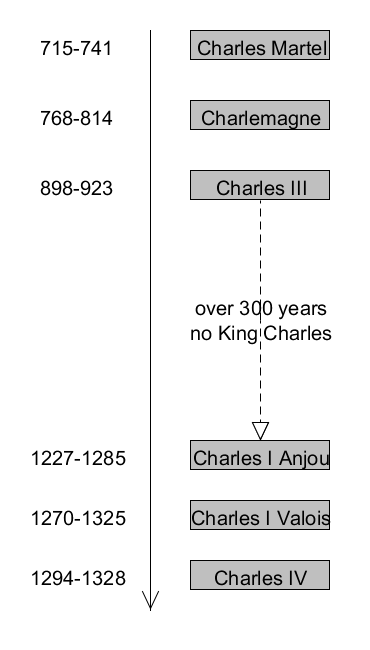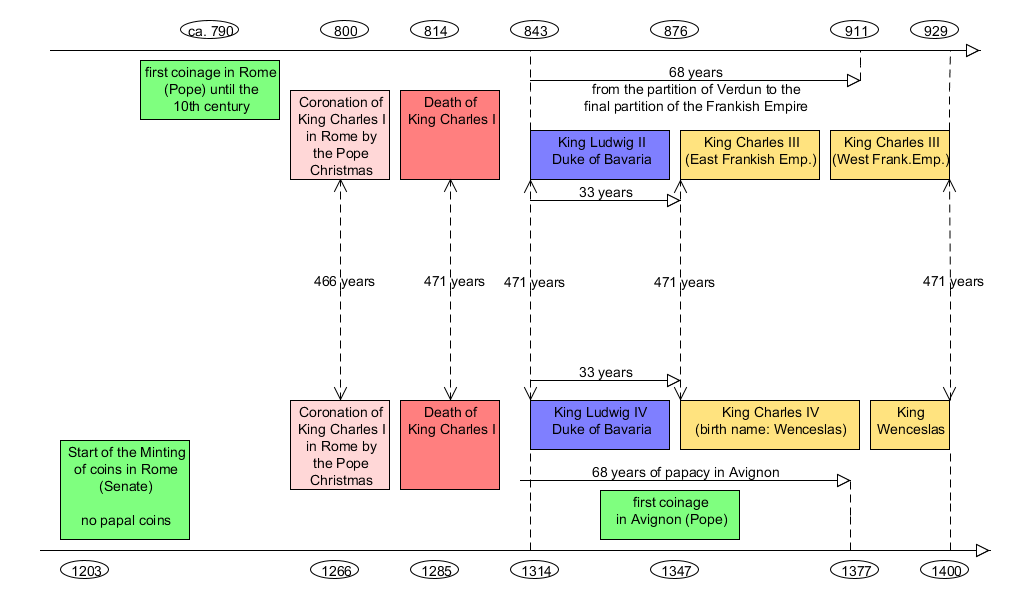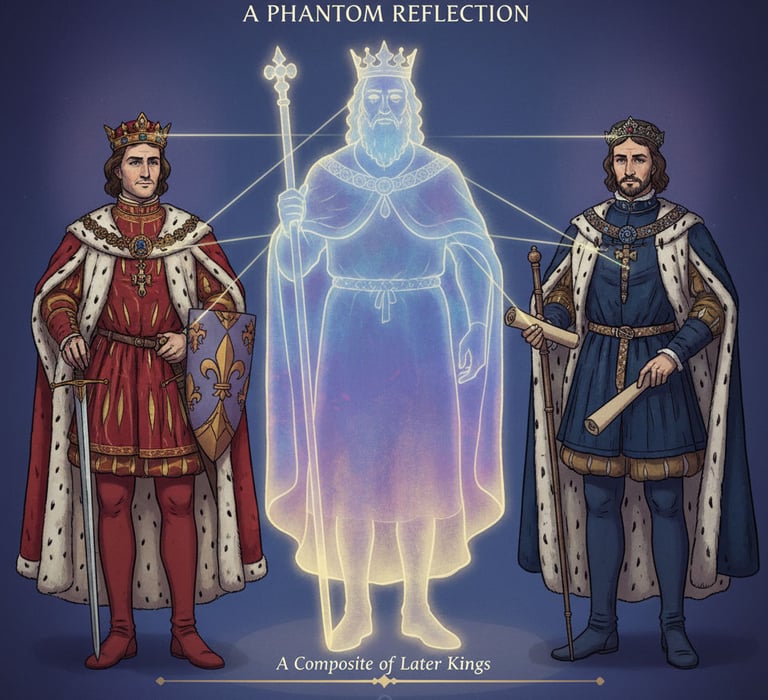Deconstructing Charlemagne: A Phantom Reflection of Later Kings
This article proves that the historical figure of Charlemagne is a fabrication, or a "phantom," constructed from the lives of two later French kings: Charles I of Anjou and Charles I of Valois. It presents several pieces of evidence: the 300-year gap where no major ruler was named Karl/Charles after the Carolingians; the parallel coronations and deaths of Charlemagne and Charles I of Anjou, separated by a consistent time gap; the physical resemblance of Charlemagne's coin effigy to Charles I of Valois's statue; and the mirroring of family names, where Charlemagne's father/son "Pippin" is presented as a short form of Charles I of Valois's father/son "Philipp."
CLASSICS
10/8/20253 min read


Charlemagne, the "Father of Europe," stands as one of history's most monumental figures. His reign is seen as a foundational moment for Western civilization, a beacon of light in the so-called Dark Ages. But what if this legendary emperor, a figure seemingly carved from stone, is actually a ghost? What if the historical Charlemagne is a phantom, a composite character constructed centuries later from the lives of other kings?
An investigation into the historical record reveals profound anomalies that challenge the very existence of this iconic ruler. The evidence suggests that "Charlemagne" is not a figure from the 9th century, but a phantom reflection, primarily built from the lives of two much later French kings.
The 300-Year Silence
One of the most significant red flags is the curious absence of his name. After the Carolingian dynasty faded, the name Karl (Charles) vanished completely from the royal lineage of the powerful East Frankish and Holy Roman Empires. For over 300 years, not a single king or prominent member of a ruling dynasty bore this supposedly legendary name.
If Charlemagne was truly the revered founder of the empire, why was his name abandoned for centuries by his successors? This long silence is highly suspicious and suggests that the name, and perhaps the man himself, did not have the historical importance in that era that was later attributed to him.


The Phantom Reflection: Charlemagne as a Composite
The core of the theory is that the figure of Charlemagne was constructed by merging the biographies of two later, real-life rulers: Charles I of Anjou (13th century) and Charles I of Valois (13th-14th century). The parallels are too precise to be coincidental.
Parallel Coronations
The most famous event in Charlemagne's life is his coronation by the Pope in Rome.
Charlemagne was crowned Emperor by the Pope in Rome on Christmas Day, 800 AD.
Charles I of Anjou was crowned King by the Pope in Rome on Orthodox Christmas, 1266 AD.
The 466-year difference between these two events is less important than the identical circumstances: a powerful ruler named Charles being crowned in Rome by the Pope on a major Christmas holiday. This suggests one event was used as the template for the other.
Parallel Deaths
A similar parallel exists between their deaths, with a time difference that hovers around the same period.
Charlemagne is said to have died in 814 AD.
Charles I of Anjou died in 1285 AD (a 471-year difference).
The consistency in the time gap between the lives of these two figures strengthens the argument that one is a "phantom copy" of the other, shifted back in time.


The Face of a Different King
The physical depictions of these men provide another layer of evidence.
The image on coins attributed to Charlemagne bears a strong resemblance to the known statue of Charles I of Valois.
Meanwhile, the famous statue of Charles I of Anjou is strikingly similar to the traditional depiction of Charles Martel, Charlemagne's supposed grandfather.
This suggests that the iconography of the Carolingians was created by borrowing the likenesses of these later, real kings, further cementing the idea that the earlier figures are historical echoes.


The Philipp/Pippin Connection
The final piece of the puzzle lies in the names of their family members.
Charlemagne's father and his eldest son were both named Pippin.
The father and eldest son of Charles I of Valois were both named Philipp.
But "Pippin" is simply a diminutive or short form of the name "Philipp." This linguistic link provides a direct parallel between the family structures of the legendary Charlemagne and the historical Charles I of Valois, suggesting the former's family was modeled directly on the latter's.
Conclusion: The Man Who Never Was
When viewed together, the evidence is compelling. The 300-year absence of his name, the precise parallels in the lives of later kings, the borrowed physical likenesses, and the mirrored family names all point to a disturbing conclusion. The Charlemagne of our history books may not be a man who lived in the 9th century, but a powerful myth—a phantom created centuries later to provide a glorious and foundational origin story for the empires of Europe.



